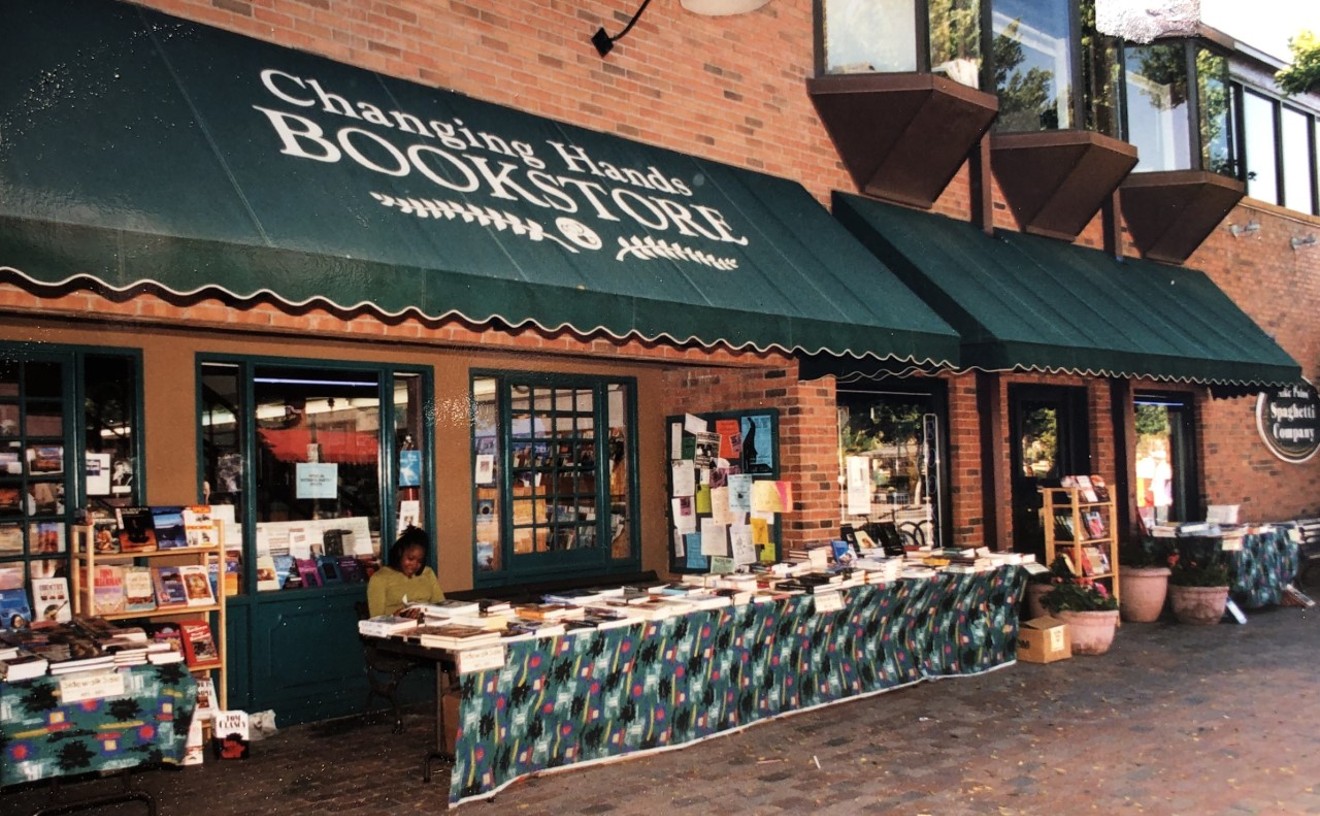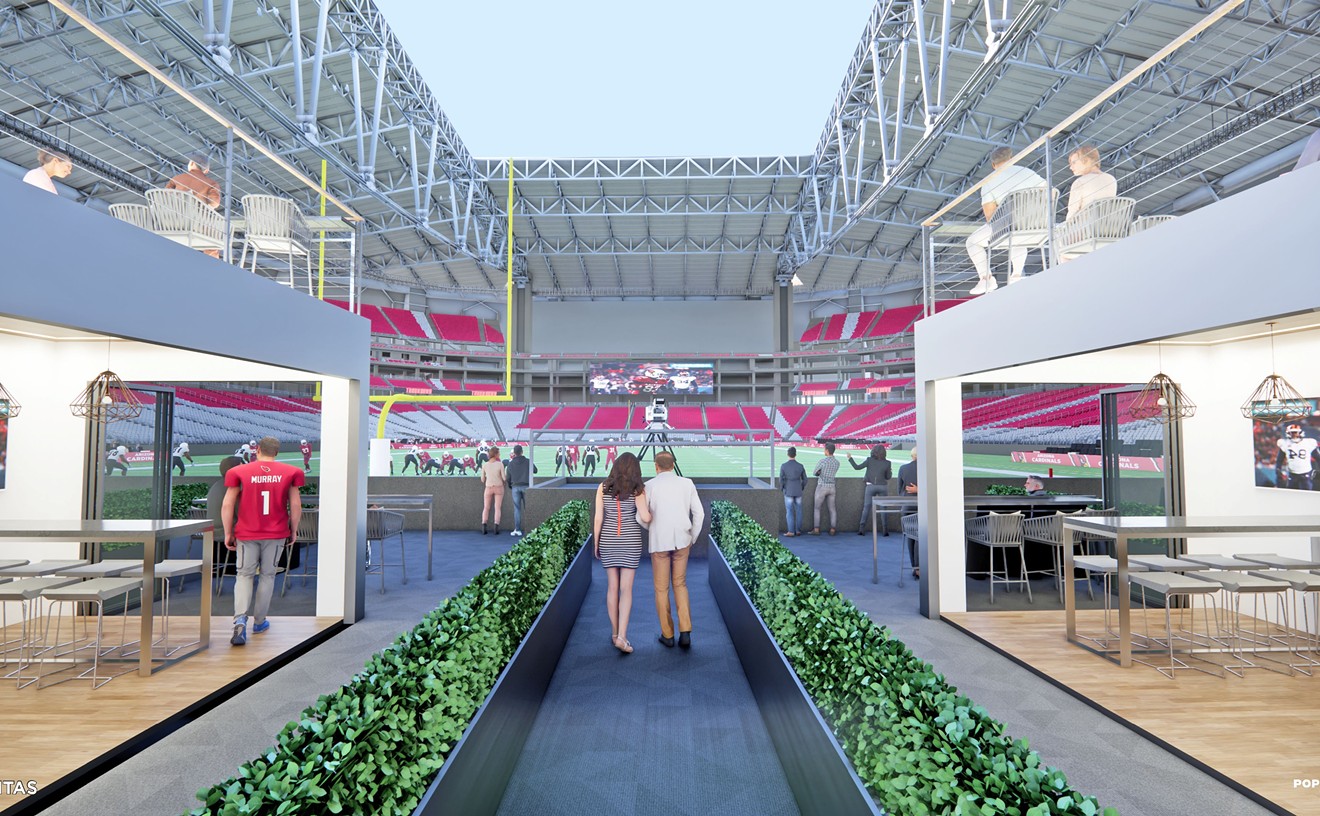The word “invention” ignites thoughts of Leo da Vinci pouring over a flying machine sketch, Edison pacing the floor of his New Jersey workshop, and maybe that one Simpsons episode. But probably not Arizona.
Having just passed the 100-year mark in 2012, Arizona’s baby-soft history doesn’t exactly pop with spikes on any scientific timeline, but you’d be surprised by how many well-known, everyday, billion-dollar inventions have emerged from our own backyard.
There’s even talk of the personal watercraft (jet ski) being invented right here, of all places. But of all the inventions to come out of the Grand Canyon state, here are the ones we could track down. The current-day TASER, the KangaRing car/phone accessory, the Keystone Kool (pool) Deck, and rubberized asphalt all have roots in Arizona.
TASER
First, TASER is an acronym for Tom A. Swift’s Electric Rifle, and two, its storied headquarters are located in Scottsdale.
Steve Tuttle, Vice President of Strategic Communications at TASER International, explains how the original TASER was invented in 1974 by former NASA employee Jack Cover, yet it was considered a firearm due to early models using gunpowder. However, the TASER we know today was further developed in the 1990s in Arizona.
Air TASER began in September 1993 with five guys: two brothers, an engineer, a sales guy, and Tuttle. Rick Smith (one of the brothers) was seriously affected by a road rage incident in Scottsdale in which two of his friends were shot. He found Cover in Tucson, and set to work developing a new TASER using compressed air.
A bumpy yet successful road laid ahead, full of trade shows, Sharper Image catalogs, cell phone store displays, and involvement with law enforcement. “We did everything wrong, we failed at everything,” Tuttle says, “But we used elbow grease and passion to get through it.”
Tuttle says the TASER is now in 107 countries, thus the current company name: TASER International, Inc.
Tuttle says this was the kind of American dream story where it didn’t happen overnight, because, as he put it, “You’re not selling pet rocks.”
KangaRing
Even if you haven’t heard of this, you’ve definitely seen it around. Patented inventor and consultant Linda Schuerman Anderson – president of LS Designs, Inc. and member of the Inventors Association of Arizona – invented the KangaRing back in the 1990s.
Anderson admits she’s always been creative, and loves to be a problem solver, which is exactly what came into play with this neat little car accessory. It’s an accessible pouch for your phone connected to a lighter or charger (in fact, just look at the photo).
Anderson says her invention came about through necessity. “I was always chasing my phone around the car and I thought, ‘There’s got to be a better way,’” she says with a laugh, “Which is what every inventor says.”
Though the KangaRing started as a handy accessory, Anderson says the “The market changed from convenience to safety.” She explains this safety factor as two pronged: 1) The KangaRing reduces distracted driving, and 2) car accident sufferers can be IDed by their KangaRing-secured phone.
On that note, you’d better not be reading this on your phone while driving.
Rubberized Asphalt Concrete
That smooth ride feel once construction finally effs off and stops forcing you to exit the freeway: That came from Arizona, too.
Doug Nintzel, spokesman for the Arizona Department of Transportation, explains in e-mail how ADOT has used rubberized asphalt on state highway projects for decades. He also, of course cites, Charlie McDonald.
The Rubber Pavements Association – a nonprofit group founded in 1985 – considers McDonald, a City of Phoenix engineer during the 1960s, the “Father of Rubberized Asphalt.” According to the RPA website, McDonald created a “formula for mixing scrap tire material and asphalt to develop a material that would make the asphalt behave much like tire rubber… application methods were primitive, but the binder he created started a whole new paving industry.”
In the Valley, rubberized asphalt has gone from the City of Phoenix using it for potholes in the ‘60s to the Quiet Pavement Pilot Program in 2002. ADOT and the Maricopa Association of Governments “teamed up on the program that retrofitted a lot of our formerly concrete-pavement freeways with a one-inch top layer of the quiet pavement,” Nintzel says.
Now we have to start saying, “Put the rubber to the rubber,” or something.
Keystone Kool Deck
With a knack for storytelling not unlike Garrison Keillor, Ted Deason – son of Keystone Kool Deck inventor Max Deason and current president of Mortex Manufacturing Co. – will tell you how his father made pools even cooler.
Tucson’s Mortex was created in 1962, at a time when pools were coming along in Arizona. “Problem is hot weather,” Deason says, attributing the Arizona heat as the “main driving force” for the Kool Deck.
Simply put, concrete decks need about a half -inch thick topping. The type of guy who was “an inventor driven by need,” Deason Senior concocted a formula to keep the topping cool for feet and bottoms – “making pools a great place to be around.”
Deason says his father was open with his tips and inventions, but the only thing kept secret was the Kool Deck formula. “Pop wasn’t that way except for the Kool Deck,” he says, “he would tell you how something worked.
Holiday Light Sliders
Karren Moreland refers to herself as a “nighttime inventor” since creating Holiday Light Sliders – a way of installing decorative lights on a track system versus the old Clark Griswold way.
The formerly UP-N-AWAY Track originated in the Globe-Miami area when Moreland was 9 years old. “There was a woman in our neighborhood who was a widow and kept her lights up all year round.” She says she wondered why, but as a kid, didn’t understand the work behind it.
Years later, it was her turn to hang up lights, but thought there had to be an easier way than going up and down the ladder. “Why can’t we just do something like curtains?” The idea formed then to slide decorative lights into a permanent track system – “Basically a curtain rod.”
Moreland says it was around 1997 when she realized she needed to do something about this. “You might say it’s taken me a lifetime.”
Holiday Light Sliders went from a notarized drawing to a “ginormous” prototype made by her father, a woodworker, for the patent. She became a member of the Inventor Association of Arizona, got involved in home and hardware shows, and was even asked to participate in the Invent Now America event in Orlando.
Now with more than 10,000 sliders sold, she continues her mission of making people realize, “Ladders are unnecessary.”











